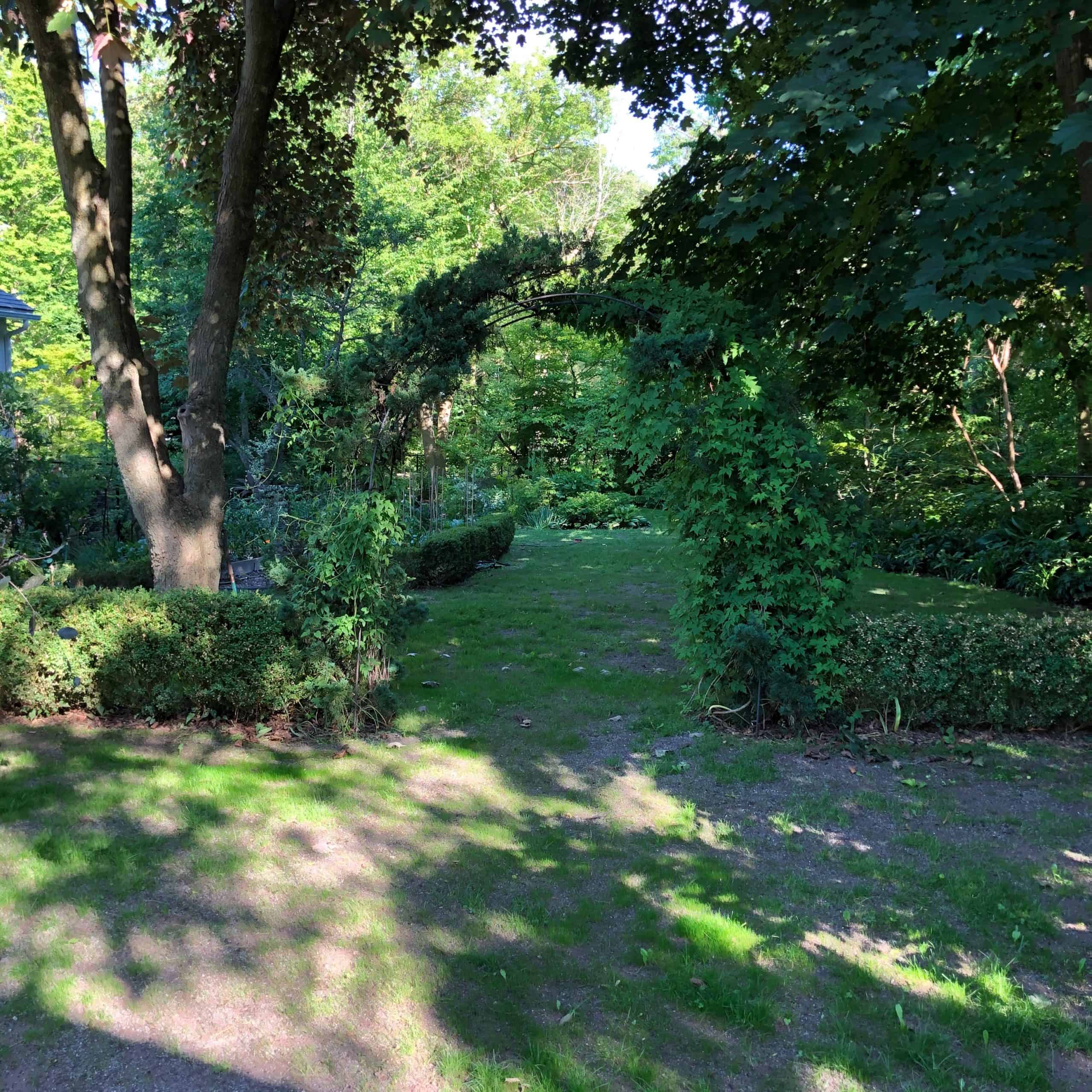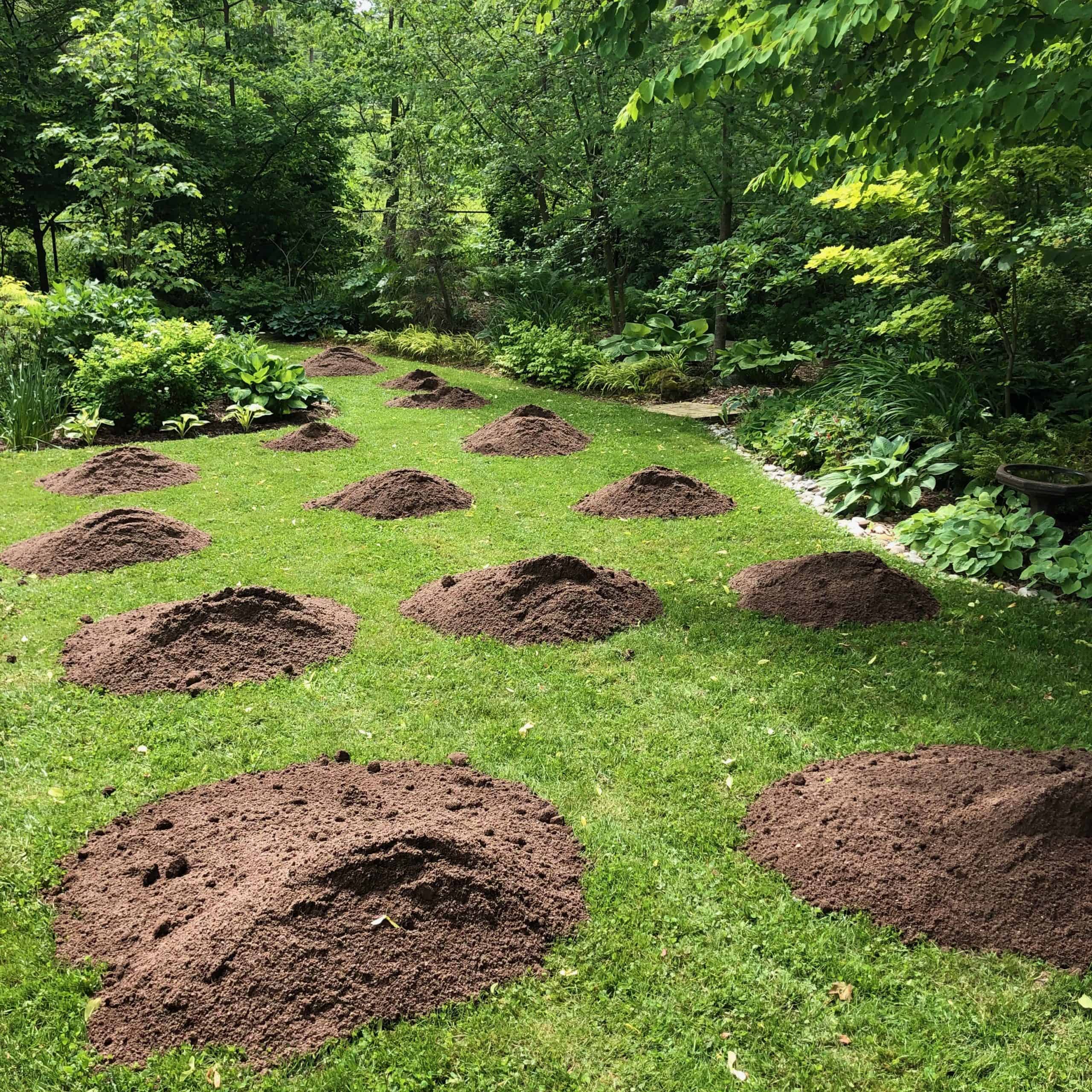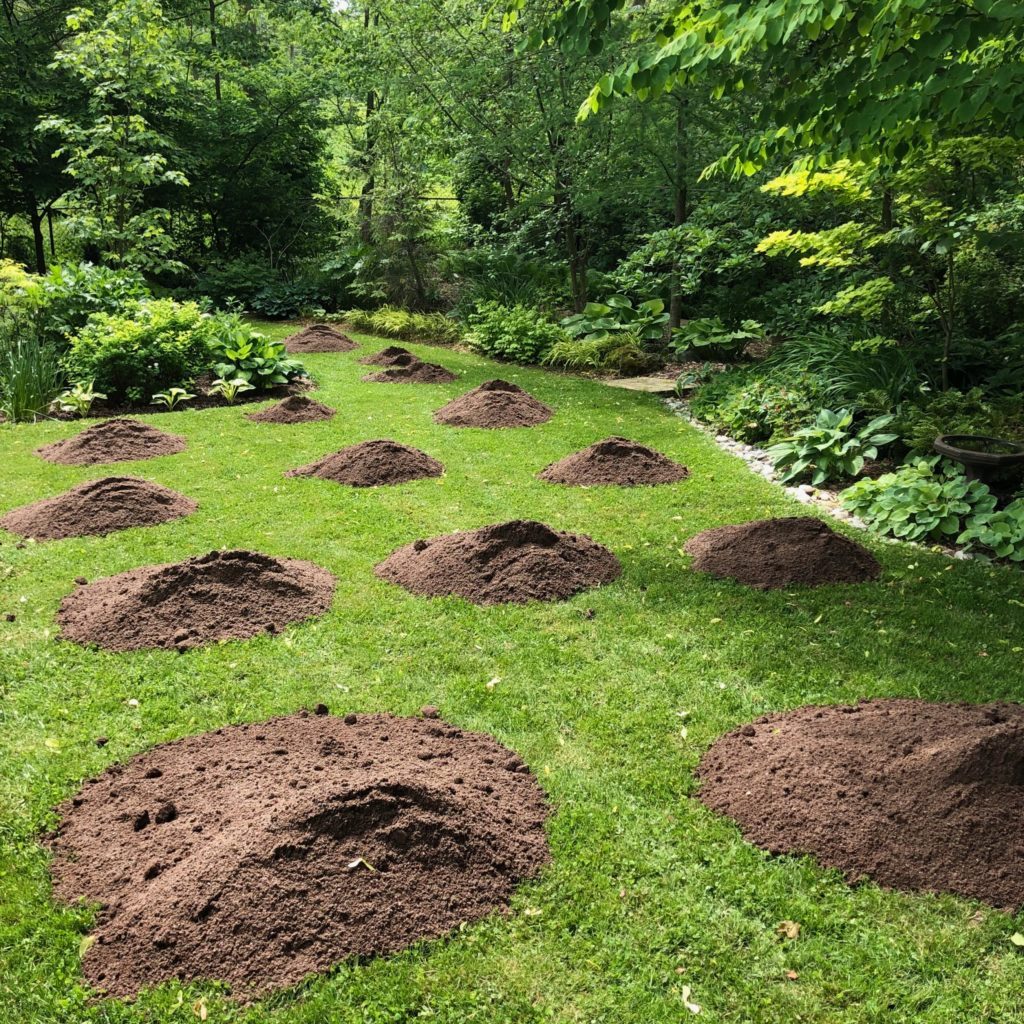When we moved into our house, the front and back lawns weren’t remarkable, but a perfect lawn had never been a priority. We eliminated the small front lawn entirely, adding a beech and redbud, shrubs, perennials, and groundcovers in the first year, but the back lawn was generally left to fend for itself. Over the years, we gradually planted deep perennial beds, added a cutting and vegetable garden, and found space for many more trees and shrubs in the back.
We carefully kept the back lawn mown high and fertilized once or twice a year, but that was all the attention it received. “We” is really my husband, because he is the one who mows, fertilizes, distributes a thin layer of shredded leaves over the area every fall and digs dandelions by hand. (He has the knees of a teenager.)

Eliminating the back lawn altogether wasn’t a consideration. The maintenance of a 50- by 135 -foot (15- by 41-metre) back garden of shrubs, perennials and groundcovers would be too time consuming, plus I like the foil a lawn provides for the ornamental beds and the flat open areas where our dog and grandchildren can run with abandon. In any case, each time I edge the beds, the lawn shrinks a bit more.
I also don’t mind the violets and white clover in the least; it was the galloping creeping Charlie (Glechoma hederacea) overtaking the weakening turfgrass that needed to be curtailed. It’s futile to think that creeping Charlie could ever be completely eradicated, but healthier turfgrass might give it more competition. However, sections of the lawn had now become bare and uneven — generally a mess after it rained — and more weeds were moving in every year.
So, after nearly 20 years of letting things be, we decided early last spring to give the lawn a makeover. Early spring, when temperatures are cool and rain is expected, is an excellent time to renovate turfgrass. Fall is good, too. Summer is not recommended, because lawn seed germinates best in cool temperatures and summer rain is unreliable.
I use the word “lawn” loosely. We weren’t hoping for a weed-free, universally green, pristine expanse of turfgrass. Something fairly thick that could be mowed would be perfectly acceptable. Our aim was to thicken the existing grass to reduce, if possible, the creeping Charlie, as well as level out the low areas to make walking around more pleasant.

The plan for renewing lawn
A plan, formulated with input from a horticultural student who was helping with other gardening tasks, was drawn up.
1. First, aerate the existing lawn and then feed with something close to 12-3-8 (not too high in nitrogen).
2. Spread a thin layer of five cubic yards 60 per cent washed sand and 40 per cent topsoil over the entire area, raking it in while levelling out low areas. Coarse sand, not smooth playground sand, which could make make the heavy clay situation even worse.
3. Broadcast 55 pounds (25 kg) of grass seed. We used a mix comprising 20 per cent Kentucky bluegrass, 20 per cent creeping red fescue and 60 per cent of two types of perennial ryegrass.
4. Install green plastic snow fencing to keep our dog off the seed while it germinated. This was a challenge because the backyard is broken up with various planting beds.
5. Keep the newly seeded areas consistently moist until the new grass got established. Also a challenge because of the irregular-sized sections. Lots of hoses and sprinkling devices were needed.
The reality of weather
Like so many plans many of us made in the beginning of the pandemic of 2020 (and now 2021), there were glitches. First, the soil delivery was delayed by several weeks, because garden centres were inundated with orders like ours; everyone had big garden plans last spring. Instead of starting in early May, we didn’t receive the soil until mid-June. In hindsight, at this point we should have delayed until fall.
Secondly, as soon as the seed went down, temperatures skyrocketed and we went several weeks without a drop of rain. Sprinklers were going nearly non-stop and you could almost see steam rising due to the heat. At some point, a representative from the water utility called to ask if there was a leak on our property, because our water bill was significantly higher than in previous years. One might say astronomically higher.
I will be frank: germination was spotty in areas, but the long-term benefit is that the ground is more even and the creeping Charlie seems to be creeping less. We reseeded a few sections again that fall, when temperatures were cooler. Germination at that time was swift.
Would we do it all again? Yes, but probably break up the project over a couple of years, because it was difficult to keep the entire area out of bounds to humans and a dog, and the watering was onerous. But most importantly, I’d make sure to renovate when cool temperatures are forecast.









